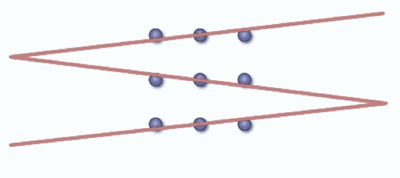The PhD club arranged an event called “From Idea to Innovation” with a line-up of three experienced external speakers. The first speaker caught everyone’s attention with his talk about restrictions to being truly creative. The good news is; you can train your brain to become more creative.
The older you get, the less creative you become. This correlation is (unfortunately) very clear to scientists. So when trying to be creative and innovative, you should actually “hire” kindergarten children. But that could lead to other problems, one could argue.
So how do adults become more creative? This was one of the questions raised by Associate Professor at DTU Management Engineering and entrepreneur Balder Onarheim at the The Novo Nordisk Foundation Center for Biosustainability (CFB) PhD Club event “From Idea to Innovation”.
Developing a brain stimulator
Balder Onarheim is studying creativity and the human mind. Currently, he and a team of creative souls have started a company that is working on developing a hat-like device, which can run small pulses of electricity through the brain, because studies have shown that electrical signals to the brain make us more creative.
But there may be other solutions apart from electric pulses:
“Basically, tacit constraints are the biggest hindrance to being creative. We tend to make the problem more complex, than it actually is, because we constrain our brains with a set of predefined rules,” he says.
"Tacit constraints are the biggest hindrance to being creative"
Balder Onarheim, CEO at Plato
Balder Onarheim showed the audience 9 dots in three rows and told people to draw a pattern that touches all the dots using no more than 4 lines. You can only go back using the same line once. We’ll get back to the solution later.
Ambitious PhD club
The event was held on Thursday the 6th of October. Around 20 PhD students attended the event, which was for PhD students by invitation only.
“We hope to attract more interesting speakers in the future for these PhD Club events. As a PhD student you are both a student and an employee; a position that can be difficult to navigate. We often work very long hours and therefore, it is really nice to get to know each other in this kind of setting – and at the same time get inspired,” says PhD student Anne Sofie Lærke Hansen, who coordinated this event together with PhD Club chair, PhD student Maja Rennig.
CFB’s business development team also attended the event to answer questions related to the innovation/business development process. Hans Genee, CSO at the CFB spinout Biosyntia also gave a talk. Hans Genee’s advice for young entrepreneurs was to go to ventures and competitions and showcase the idea in order to get capital and hopefully win some prices.
Front-end innovation lead, senior manager in Novozymes Frank Hatzack talked about The innovation process in a R&D based biotech company. One of his take-home messages was that the company needs to set up a virtual meeting points, where the creative minds in the company can share their ideas. Another point was that, even though young bright minds are important to a company, experienced employees with all the knowledge and historical insight are also very valuable. One group without the other may not be as successful as the combination, according to Frank Hatzack.
Drawing the line is easy (when discarding your constraints)
And now, back to the riddle:
“Only 10 percent of adults can solve this riddle, whereas up to 80 percent of children figure it out. Children tend to think out of the box, bending the paper or drawing one thick line over all the dots. So in order to be creative, you need to get rid of the constraints, that is, NOT sticking so much to the rule of 4 straight lines,” Balder said and continued:
“I use to say that if you want to solve a problem, you have to take away the biggest constraint. In this example try to solve the puzzle with one curved stroke. Then you will probably end up having an incomplete solution, which may allow you to see the real solution.”
If you are still thinking about the answer, you can see one of the solutions beneath (using only three lines).

- Frank Hatzack is a senior manager at Novozymes with a leading position in innovation development.
- Hans Genee was a PhD student at the The Novo Nordisk Foundation Center for Biosustainability at Technical University of Denmark and founded the successful company Biosyntia. Biosyntia is a biotech startup within synthetic biology and metabolic engineering. He talked about the journey from idea to innovation/startup as a student.